Gran Canaria:
Do you already know all the hidden treasures of the island?
Discover on your own the island of Gran Canaria, jewel of the Atlantic. Golden sandy beaches, volcanic landscapes and lush forests. Experience the flavor of its rich gastronomy, its culture.
The island offers a variety of landscapes, a regular climate throughout the year, and a rich cultural heritage, influenced by the aboriginal Canary Islanders, as well as by European and African cultures. Gran Canaria is home to endemic species and an exceptional biodiversity.
And there are activities for all tastes, from hiking, water sports, and endless leisure options, making it one of the most important tourist destinations in Spain.
Gran Canaria is the third largest island of the archipelago and the second most populated island of the Canary Islands.
Population of the island in 2023: 857 thousand inhabitants
Capital: Las Palmas de Gran Canaria
Ethnonym: Canary Islander /Canariona
- 1. Culture and Traditions of Gran Canaria
- 2. Beaches of Gran Canaria
- 3. Geography of Gran Canaria
- 4. Climate of Gran Canaria
- 5. Gastronomy of Gran Canaria
- 6. Recreational Activities and Sports
- 7. Places of Tourist Interest in Gran Canaria
- 8. Parks and Natural Spaces in Gran Canaria
- 9. Economy of Gran Canaria
1. Culture and Traditions of Gran Canaria
Gran Canaria's culture is a reflection of its rich history, where diverse influences are intertwined and have shaped its traditions. This mix of cultures is manifested in customs, festivities and a vibrant cultural heritage.
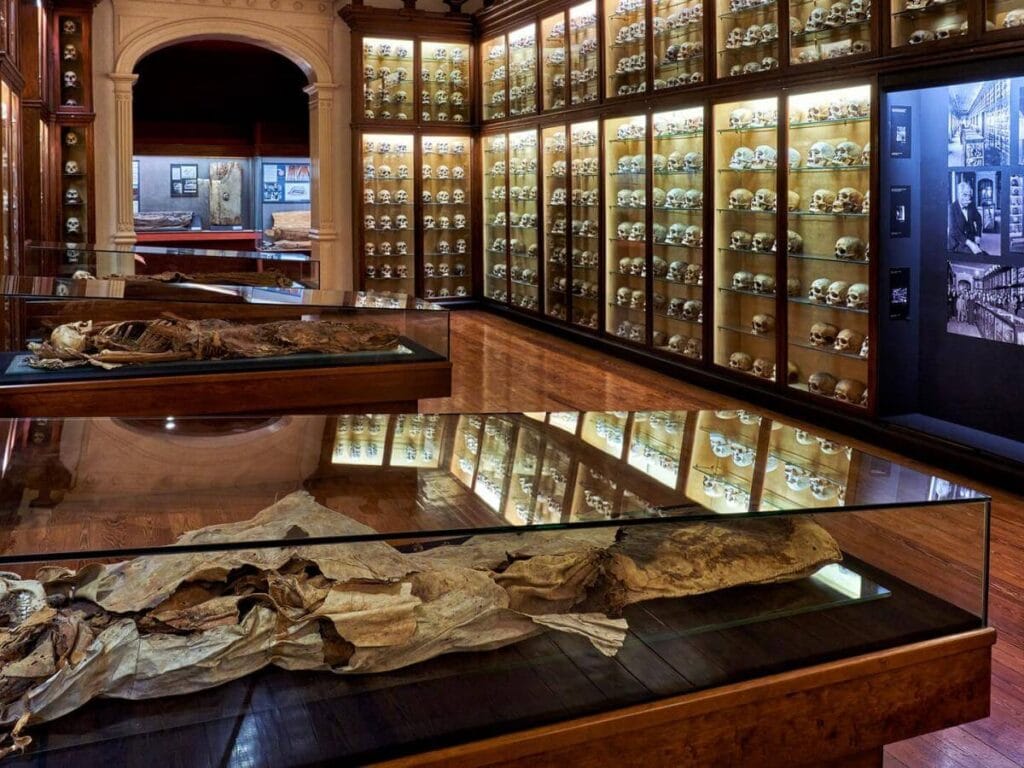
Aboriginal History
The first inhabitants of Gran Canaria, the aboriginal Canary Islanders, left a deep imprint on the island’s culture. Their way of life, based on agriculture and fishing, has endured over the centuries.
Canary Island Museum
The Museo Canario, located in Las Palmas, is a valuable educational resource that preserves the aboriginal history of the island. This museum houses a rich collection of archaeological artifacts, as well as information about the traditions and ways of life of the original inhabitants. Here you can find utensils, ceramics and tools that offer a unique insight into their culture.
Castilian Conquest
The arrival of the Castilian conquerors in the 15th century marked a significant change in the history of Gran Canaria. This conquest not only introduced new customs and influences, but also brought about the lineage and mixture of cultures that can be observed today. The adaptation of the aboriginal culture to these new influences has resulted in a rich multicultural legacy.
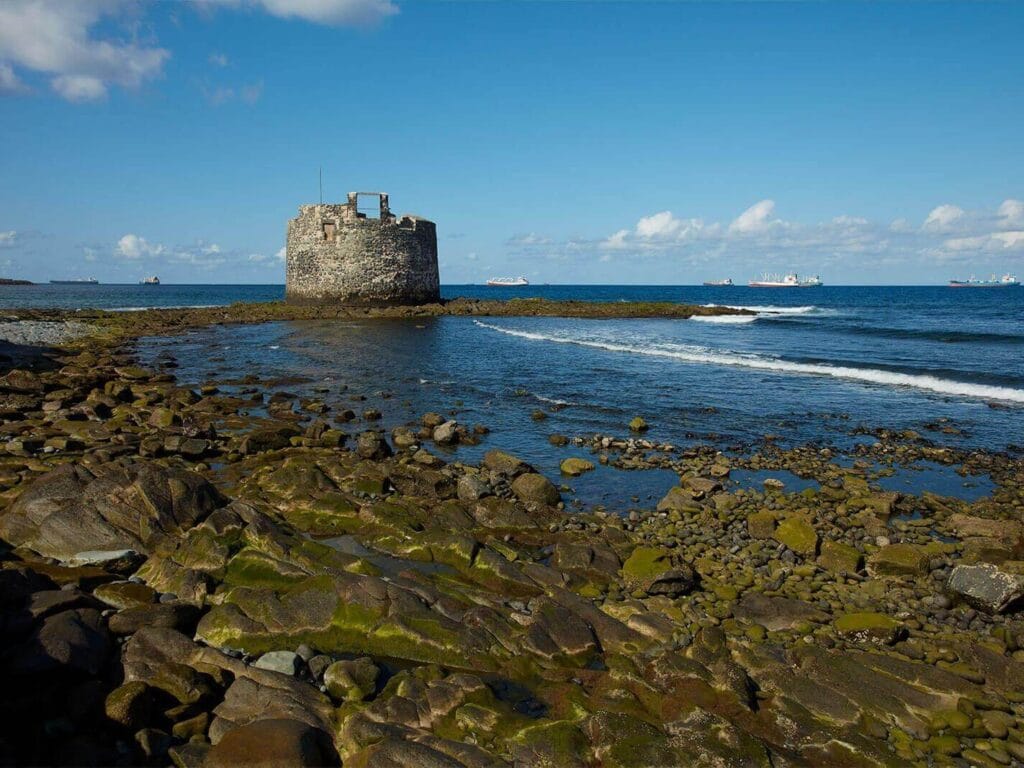
European Influence and Trade
Since the conquest, Gran Canaria has been a meeting point for diverse cultures, thanks to its strategic location on the trade routes between Europe, Africa and America. This influence is manifested in various cultural aspects, including architecture, music and gastronomy, which combine elements of its roots with those brought by the European colonizers.
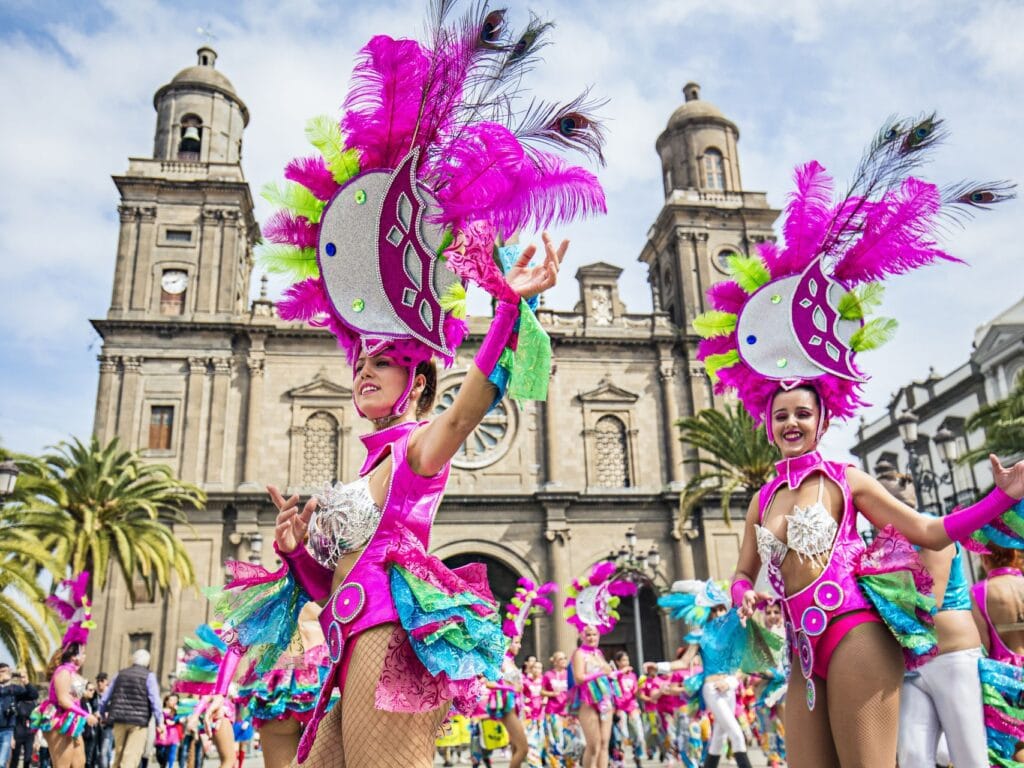
Parties and Events
Gran Canaria’s festivities are a reflection of its cultural diversity. From vibrant carnivals to religious traditions, the island celebrates a wide variety of events throughout the year that attract both locals and tourists.
Las Palmas Carnival
One of the most important and internationally recognized Carnivals is the Carnival of Las Palmas. During this period, the streets are filled with color and music, with parades, comparsas and concerts that celebrate life and joy. This event brings together thousands of participants who dress in elaborate costumes and defy social norms through satire and humor.
Pilgrimage of the Virgen del Pino
This festivity is an important religious celebration that takes place in Teror and honors the Virgen del Pino, patron saint of Gran Canaria. The pilgrimage features a colorful procession of the faithful dressed in typical Canarian costumes, accompanied by traditional songs and dances. This event shows the strong attachment of the Canary Islanders to their religious and cultural traditions.
Easter
Holy Week in Gran Canaria is a moving celebration consisting of various processions and religious events. The localities participate with fervor in this festivity, each one with its own traditions and styles. The processions are full of solemnity and color, reflecting the deep devotion of its inhabitants.
2. Beaches of Gran Canaria
Gran Canaria's beaches are one of its main attractions, offering a variety of coastal landscapes ranging from wide, golden stretches of sand to quieter, more picturesque coves. Each beach has its own personality, adapting to the tastes of all visitors.
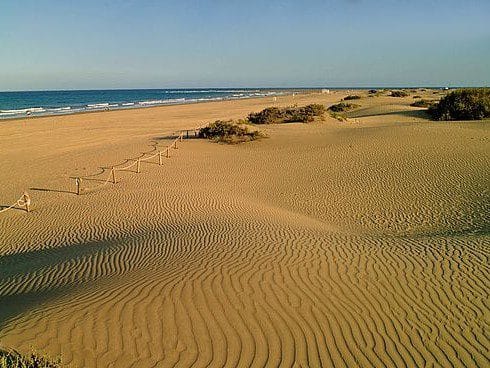
Southern Beaches
The south of Gran Canaria is known for its sunny beaches and calm waters, ideal for enjoying the sun and practicing different water activities. The most outstanding beaches in this region are:
Playa del Inglés
Playa del Inglés is one of the most popular beaches on the island. Its wide strip of golden sand stretches for several kilometers. This beach is a meeting point for tourists of various nationalities and has numerous bars, restaurants and stores. Sunny days attract numerous visitors looking to relax or enjoy sports such as surfing and paddle surfing.
Maspalomas
Maspalomas stands out for its impressive dunes, which form a unique ecosystem. The beach has a lively atmosphere, with a complete offer of services and activities. Here you can enjoy sunbathing, walks along the dunes and spectacular sunsets. The shore area is equipped with beach bars where you can enjoy typical Canarian food.

Northern Beaches
The beaches in the north of Gran Canaria offer a different experience, with less crowded landscapes and a natural environment. The main beaches in this area are:
Agaete
Agaete is home to a lovely black sand beach surrounded by mountains. This quieter beach is ideal for those seeking a moment of peace. Visitors can enjoy the scenic beauty of the surroundings, as well as activities such as hiking in the surrounding area.
Las Canteras
Las Canteras Beach is located in the capital of the island and is known for its beautiful length. Its lively atmosphere is full of life thanks to the bars, restaurants and leisure activities. It is perfect for swimming, and the famous coral reef protects the beach from the waves, creating calm waters ideal for swimming and snorkeling.
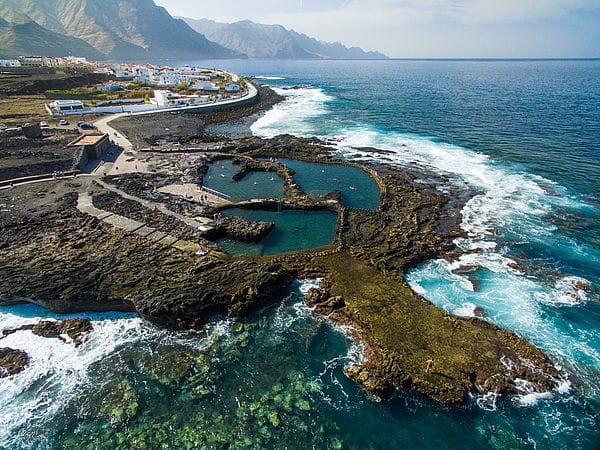
Natural Pools
Gran Canaria also has several natural pools, formed by the erosion of the sea on the rocks, which offer a safe and unique environment to enjoy the water. Some of the best known are:
- Agaete Natural Pools: These pools are perfect for swimming and enjoying the sun in a stunning natural environment. The cold sea water mixes with the rocks creating a unique landscape.
- Pools of El Pocillo: Located on the coast of Arucas, these pools are formed by lava that has eroded over the years. They are an ideal place to relax and enjoy the surroundings.
3. Geography of Gran Canaria
The geography of Gran Canaria is varied and fascinating, with contrasts ranging from rugged mountains to golden sandy beaches. The configuration of the relief and its peculiar climate contribute to the diversity of ecosystems and landscapes that can be found on the island.
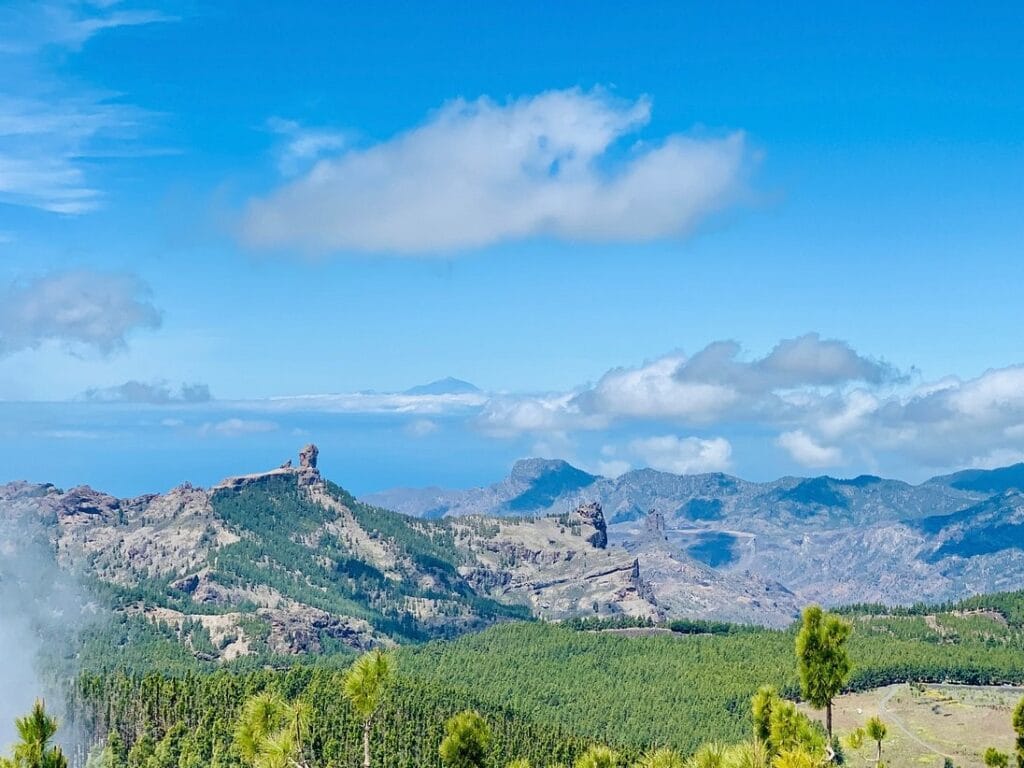
Relief and Mountains
The relief of Gran Canaria is predominantly volcanic, the result of its geological origin. The maximum altitude is found in the Pico de las Nieves, which reaches 1,949 meters. This altitude not only provides spectacular views, but also harbors a diversity of microclimates on its different slopes.
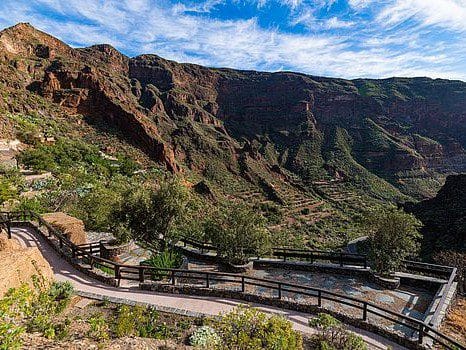
Valleys and Ravines
The island is crisscrossed by a series of valleys and ravines that give it a unique character. These geographic formations are the result of erosion and the modeling of the landscape over the centuries.
Guayadeque Ravine
The Guayadeque Ravine is one of the most emblematic of Gran Canaria. This deep ravine stretches from the highlands to the coast, offering a breathtaking natural spectacle. Home to troglodyte dwellings and a rich biodiversity, it is a popular destination for hiking and exploring the endemic flora and fauna.
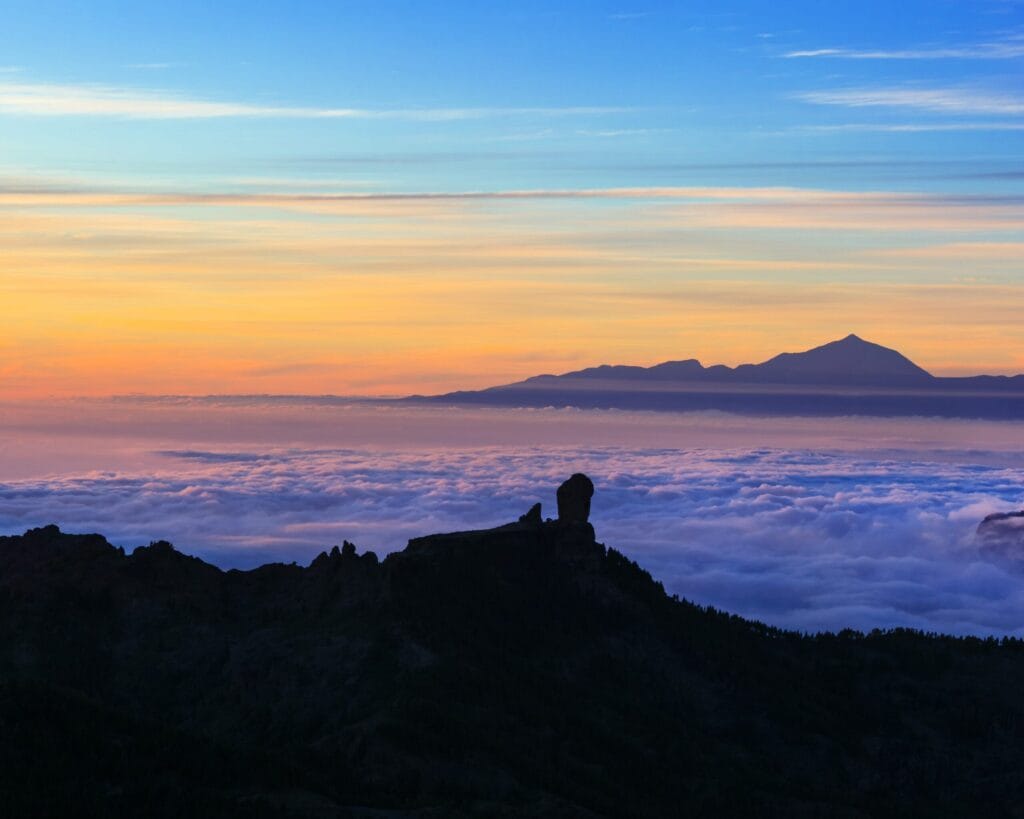
Roque Nublo
Roque Nublo is a volcanic monolith and an iconic symbol of the island. Located at an altitude of 1,813 meters, it offers breathtaking panoramic views. This monument is accessible by various hiking trails, making it an ideal place for nature lovers. Roque Nublo also has a cultural and spiritual significance for the local inhabitants.
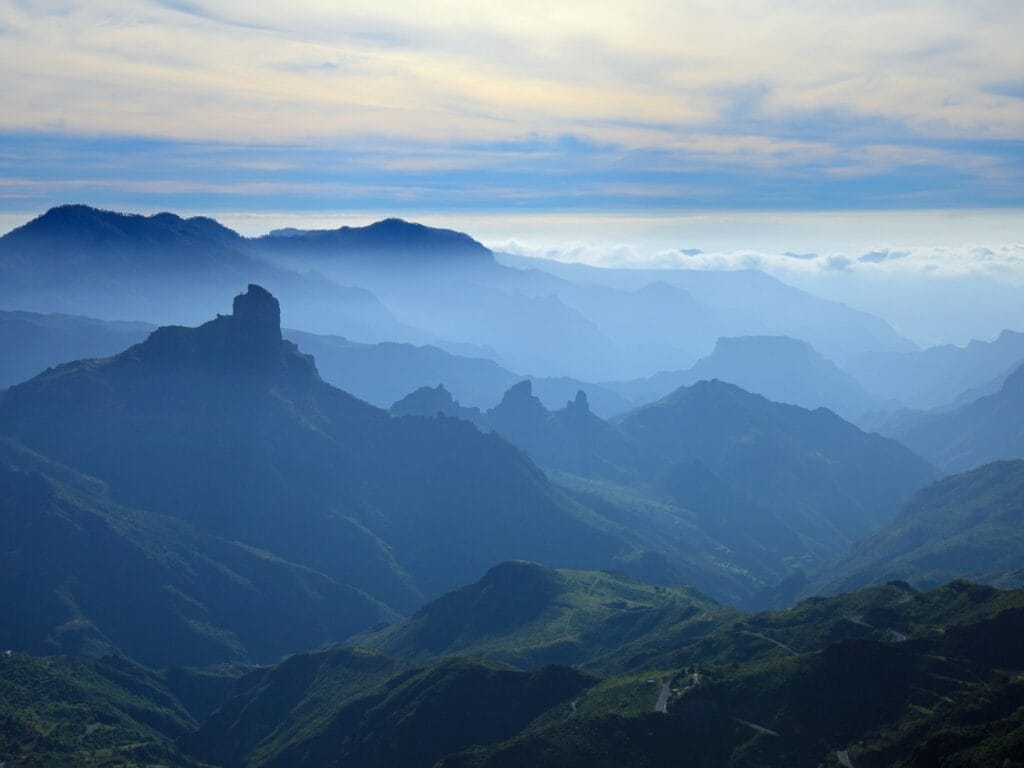
Volcanic Boilers
The volcanic calderas are the result of the eruptions that formed the island. These geological formations present a dramatic landscape and are key to the biodiversity of Gran Canaria.
Tejeda Caldera
The Caldera de Tejeda is one of the best known and appreciated. This vast depression is characterized by its impressive walls and a natural environment that includes hiking trails. In its surroundings, you can find some of the most photogenic landscapes of the island.
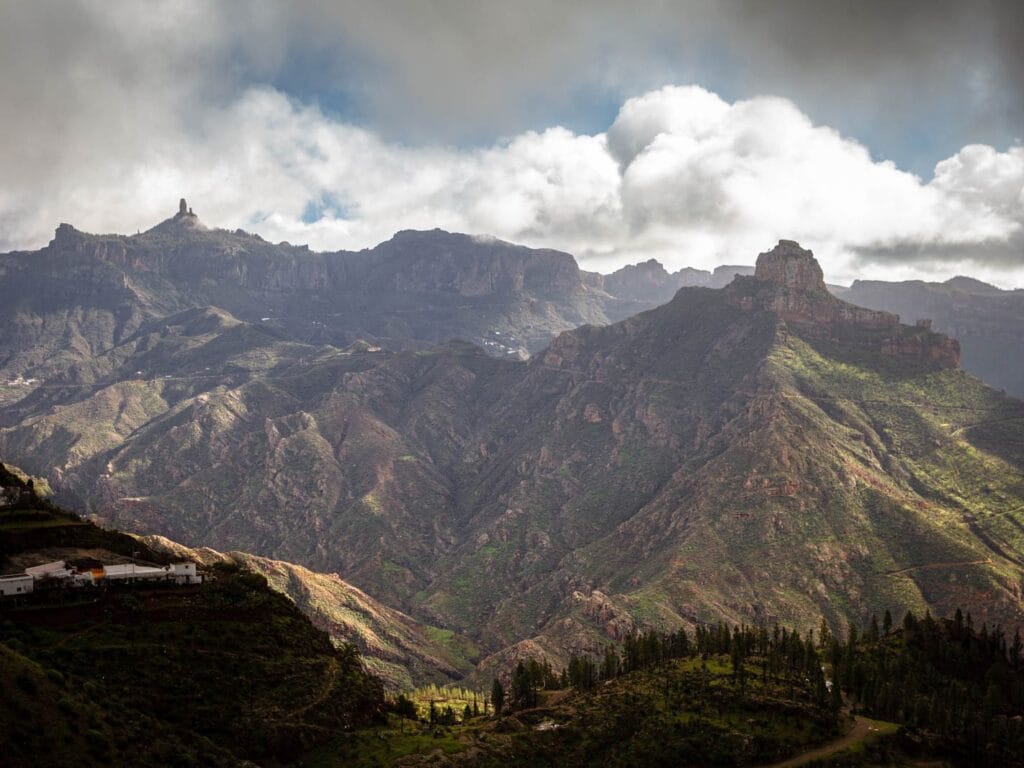
Protected Natural Spaces
Gran Canaria has many protected natural areas, which demonstrates its commitment to environmental conservation. These areas protect biodiversity and offer opportunities to enjoy nature.
Biosphere Reserves
A large number of areas in Gran Canaria have been declared Biosphere Reserves. These areas are vital for the protection of endemic species and maintain an ecological balance, ensuring that future generations can also enjoy their beauty.
Natural and Rural Parks
The Natural and Rural Parks are designed to preserve the natural environment and promote ecotourism. Among them, places like the Tamadaba Natural Park stand out, where you can experience the diversity of flora, fauna and landscapes that characterize the island.
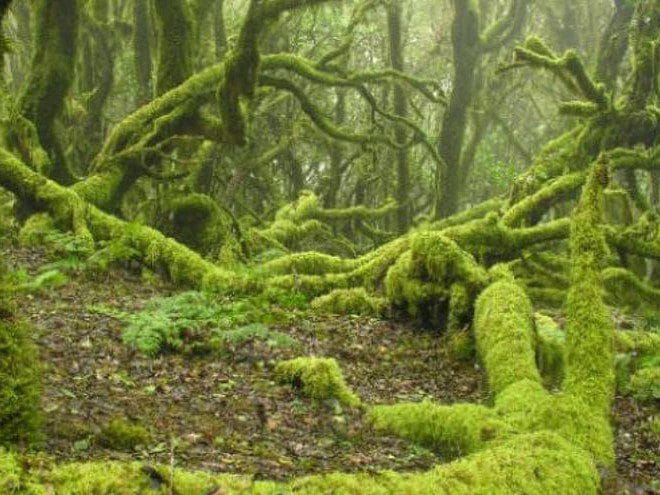
Biodiversity and Endemic Flora
Gran Canaria is home to a rich biodiversity, which has evolved in response to the particularities of its climate and geography. The endemic flora is a fundamental component of its ecosystem.
Laurisilva Forest
This subtropical forest is one of the most important ecological vestiges of Gran Canaria. Its varied species, many of them endemic, provide a refuge for local fauna. This ecosystem is crucial for maintaining the island’s biodiversity while providing scenic routes for visitors.
Canary Island Pine Forests
Canary pine forests are another key component of the island’s landscape. These trees, which are capable of surviving in adverse conditions, provide habitats for various species and help conserve the soil, preventing erosion.
4. Climate of Gran Canaria
The climate in Gran Canaria is a determining factor that contributes to its attractiveness. It is characterized by being warm and temperate throughout the year, which makes it a favorite destination for tourists and residents alike.
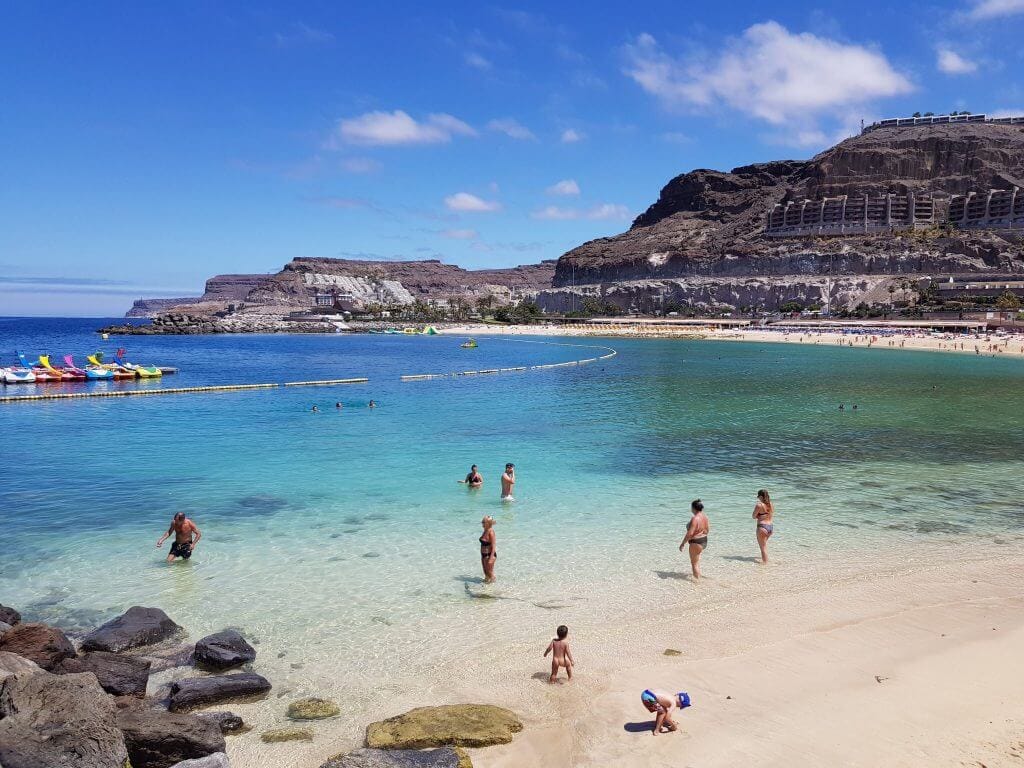
Climate Overview
Gran Canaria has a climate defined by the influence of the trade winds, which moderate temperatures and generate diverse weather conditions throughout the island. The average annual temperature ranges between 18 ºC and 25 ºC, allowing pleasant days throughout the year. Rainfall is scarce, concentrated mainly in the autumn and winter months, which allows Gran Canaria to receive tourists at any time of the year.
The variability of the climate is remarkable, allowing tourists to find ideal conditions for outdoor activities as well as for relaxing on the beach. This diverse climatic environment fosters a rich and varied ecosystem, with an abundance of flora and fauna adapted to these conditions.
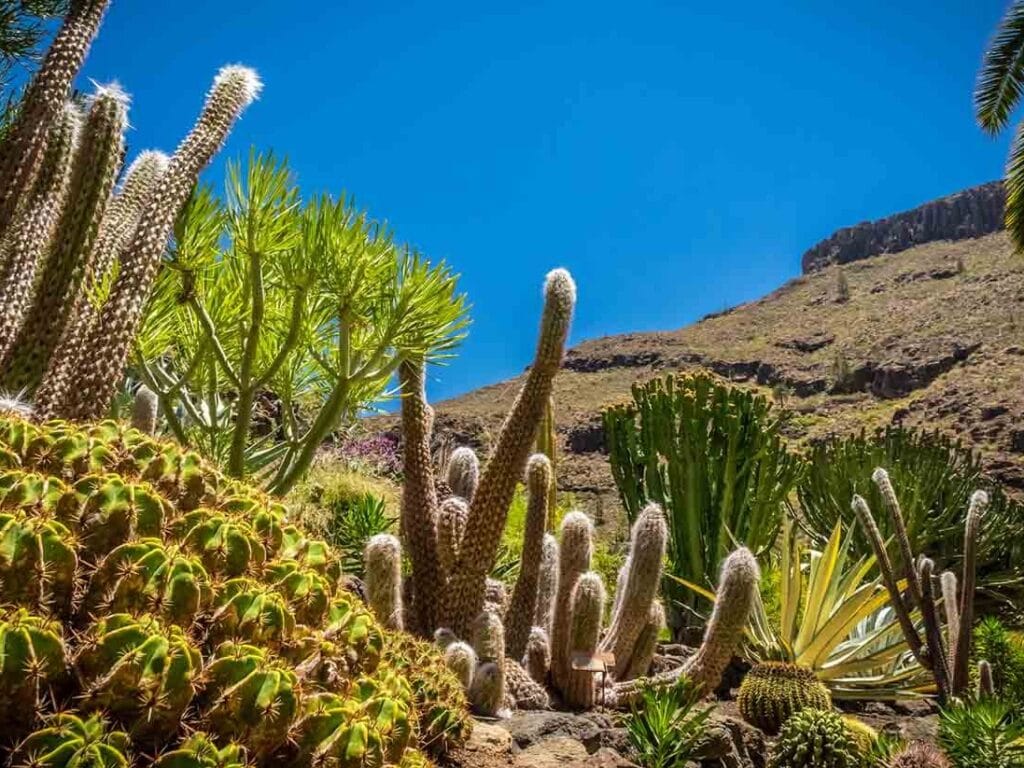
Microclimates on the Island
Due to its orography, Gran Canaria has several microclimates. The different altitudes and orientations of its mountains create variations in climatic conditions that provide a unique diversity in every corner of the island.
Northern Climate
In the north of Gran Canaria, the climate is cooler and more humid. Temperatures are milder and rainfall is more frequent during the year, especially in winter. This area is ideal for the development of lush and rich vegetation. The green landscapes contrast with the rest of the island and offer an extremely attractive environment for nature lovers.
Southern Climate
In contrast, the climate of the south of the island is characterized by being hot and dry. Temperatures are higher, and rainfall is scarce. This area is famous for its sunny beaches and tourist attractions. The favorable climatic conditions provide an ideal environment for water activities and outdoor sports throughout the year.
Gran Canaria’s microclimates create a climatic mosaic that allows visitors to enjoy different ecosystems and activities, contributing to the uniqueness of the island as a tourist destination.
5. Gastronomy of Gran Canaria
Gran Canaria's gastronomy is a reflection of its rich cultural diversity and geographical location. Traditional dishes and local products combine influences from different cultures, creating a unique culinary offer that stands out for its authentic flavors.
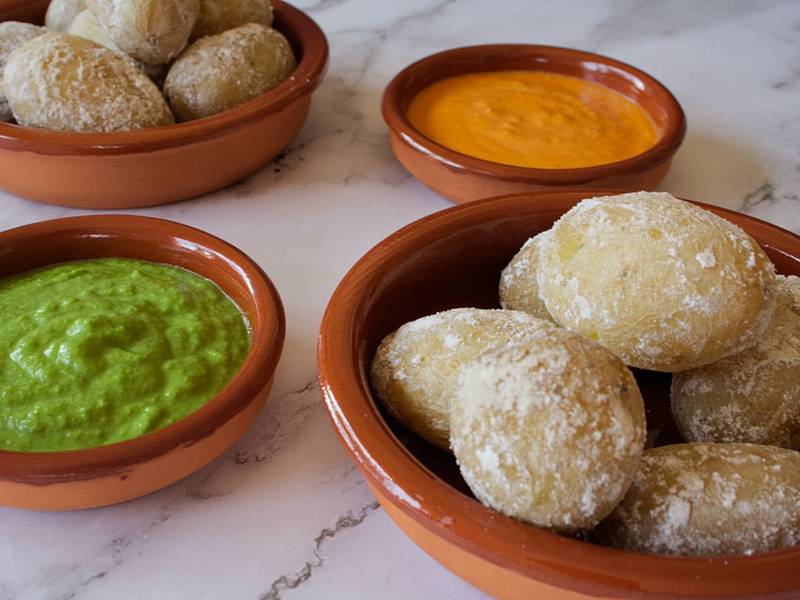
Typical Dishes
Wrinkled Potatoes with Mojo
Wrinkled potatoes are an emblematic dish of Canarian cuisine. They are prepared cooked in their skins and seasoned with salt, which gives them a wrinkled texture. They are commonly served with mojo, a sauce that can be green, based on coriander, or red, which includes peppers and spices. This dish is very popular in celebrations and family reunions.
Gofio
Gofio is a staple food made from toasted cereals, such as wheat or corn. It is consumed in various ways, including in soups, mixed with milk or as an accompaniment to other dishes. Its versatility and nutritional value make it a symbol of local food culture.
Canarian Cheeses
Canarian cheeses are renowned for their quality and variety. They are mainly made with goat’s milk, although there are also sheep’s and cow’s milk options. Cured and semi-cured cheeses stand out, usually with paprika as part of their seasoning. The Denomination of Origin that some cheeses have assures their authenticity and tradition.
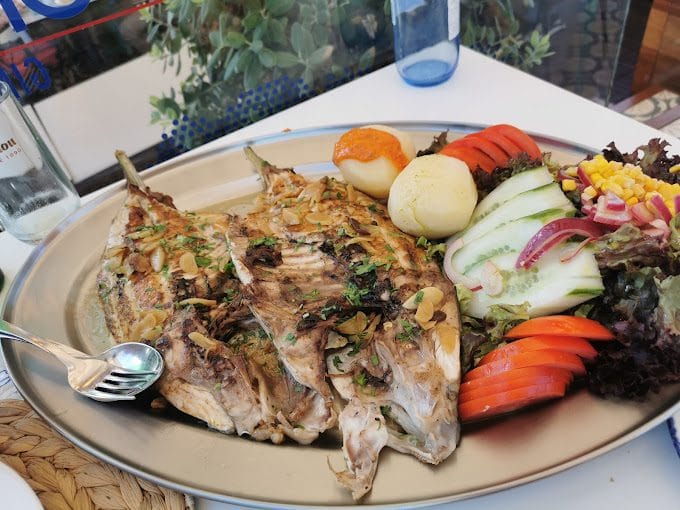
Local Products
Fresh Fish
Fishing is an important pillar in the economy and gastronomy of Gran Canaria. Fresh fish abound in the waters of the Atlantic Ocean, being tuna, sea bream and swordfish some of the most outstanding. These fish are used in a variety of preparations, from grilled to stews, bringing the flavors of the sea to the table.
Tropical Fruits
Gran Canaria is known for its tropical fruits, which grow in warm, sunny climates. Bananas, mangos, papayas and avocados are just some of the delicacies that can be enjoyed on the island. These fruits are not only consumed fresh, but are also used in desserts and smoothies, adding freshness and flavor to the local diet.
Protected Designation of Origin
Products with Protected Designation of Origin (PDO) are essential to preserve and promote Canary Island gastronomy. Foods such as Flor de Guía cheese, which is made from goat’s milk, are examples of the richness of flavors offered by the island. The PDO ensures standards of quality and authenticity, guaranteeing that the products maintain their identity.
6. Recreational Activities and Sports
Gran Canaria offers a wide range of recreational and sporting activities, allowing residents and visitors to enjoy its natural environment. From water sports on its beaches to hiking trails through the mountains, the island is an ideal place for lovers of adventure and the great outdoors.
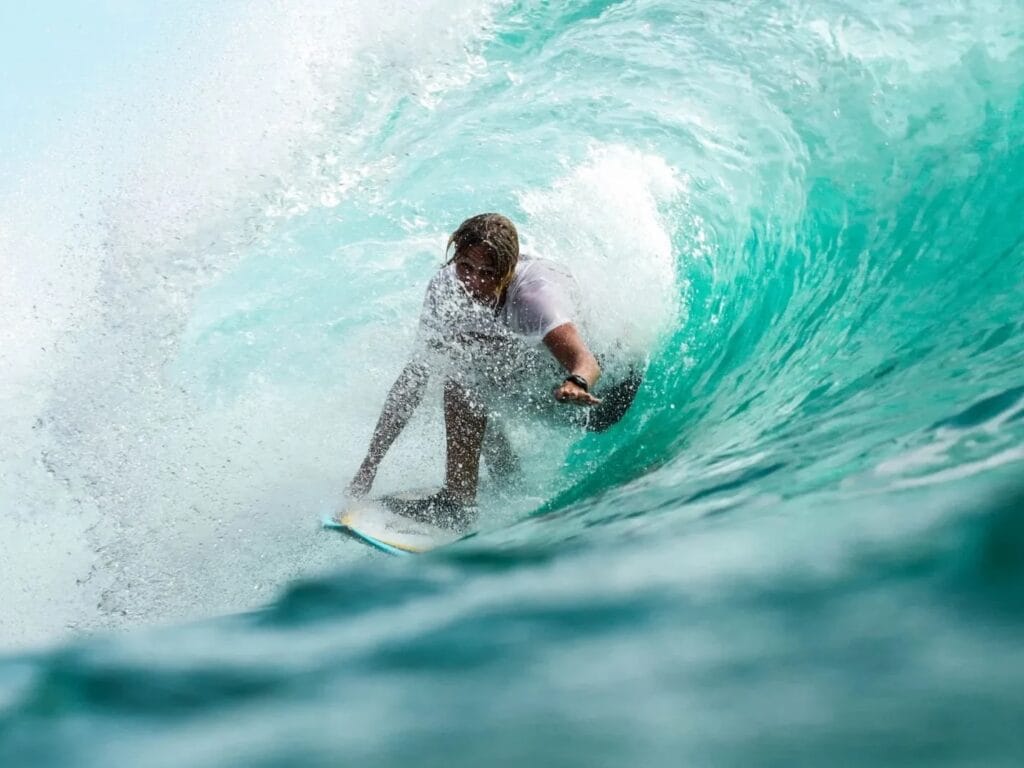
Water Sports
The climatic and geographical conditions of Gran Canaria make it a privileged destination for the practice of water sports. The crystal-clear waters and warm climate make it possible to enjoy a variety of activities all year round.
Surf and Windsurf
The southern beaches, such as Playa del Inglés and Pozo Izquierdo, are internationally recognized for their excellent conditions for surfing and windsurfing. The constant trade winds and adequate waves attract both beginners and experts. Surf schools offer lessons and equipment rental, making it easy to get started in these exciting sports.
Kitesurf
Kitesurfing is another popular activity in Gran Canaria, especially in places like Pozo Izquierdo Beach. The combination of wind and favorable waves makes this sport a unique experience. Several specialized centers offer courses for beginners and advanced courses for those with more experience.
Diving
The waters of Gran Canaria are home to a rich marine biodiversity, which makes it an excellent diving destination. Several companies organize guided dives and certification courses. Diving highlights include the Arinaga Natural Park and the wrecks found off the Canary coasts.
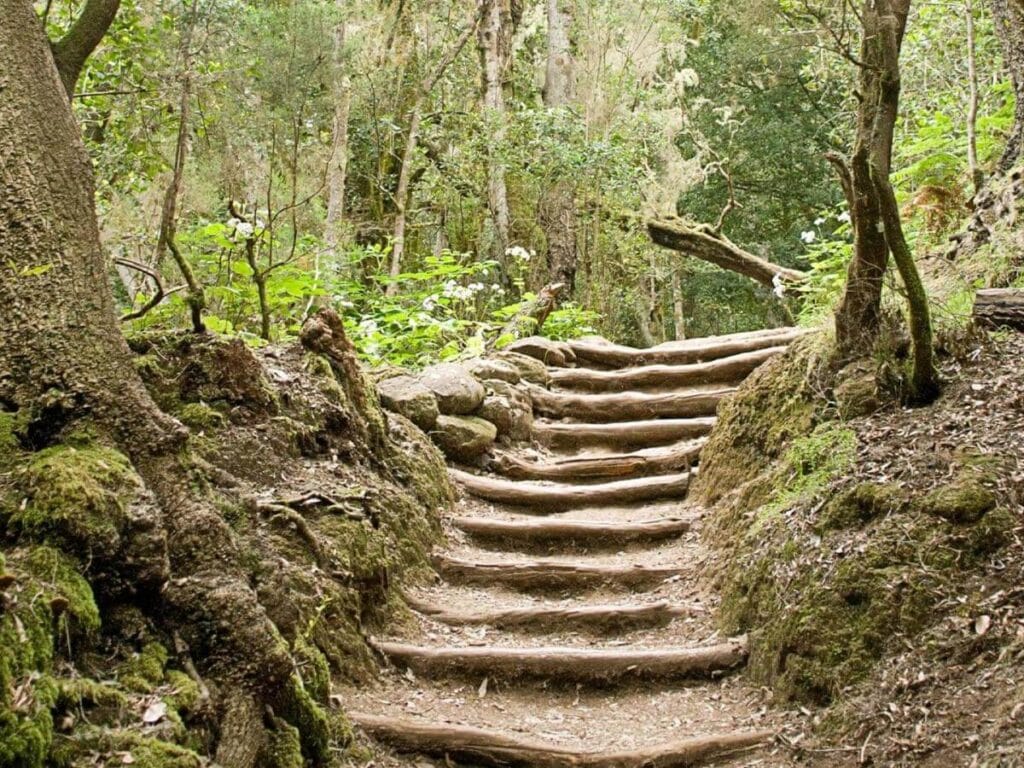
Hiking and Mountain Biking
With a varied geography that includes mountains, ravines and valleys, Gran Canaria is a paradise for hiking and mountain biking enthusiasts. Well-marked trails allow you to explore the island’s natural beauty while engaging in outdoor physical activities.
Hiking Routes
There are numerous hiking trails that vary in levels of difficulty. Some of the most popular include:
- Roque Nublo Route: A route that culminates at the famous monolith, offering breathtaking panoramic views.
- La Caldera de Tejeda Trail: This route allows you to admire the beauty of the mountains and the endemic flora.
- Barranco de Guayadeque: A trail that runs through a ravine characterized by its unique landscape and archaeological wealth.
Guayadeque Ravine
The Guayadeque Ravine is one of the most emblematic places of the island. This deep valley offers hiking trails that allow you to enjoy the native flora and fauna, as well as breathtaking views. It is an ideal place to get into nature and discover caves and ancient aboriginal settlements.
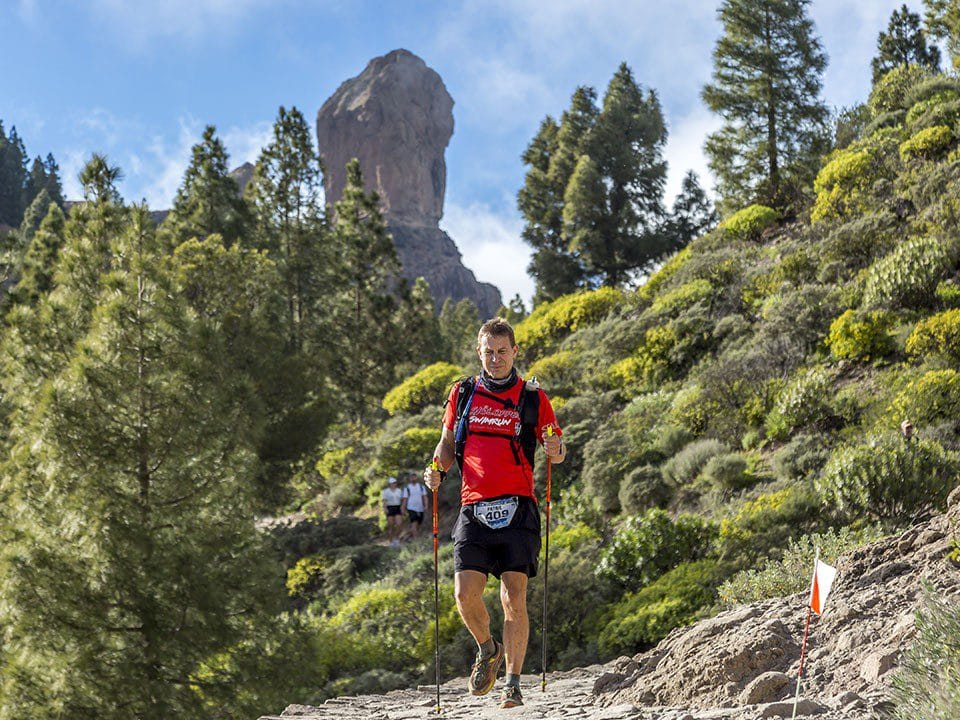
Mountain Sports
Gran Canaria also has an ideal mountainous terrain for cycling sports. Mountain roads and challenging routes are frequented by cyclists and runners.
The cycling routes cover various modalities, from mountain biking on technical trails to more gentle routes suitable for all levels. Competitions and sporting events are organized throughout the year, promoting sports among residents and visitors.
7. Places of Tourist Interest in Gran Canaria
Gran Canaria offers a wide variety of tourist attractions, where history, culture and nature are intertwined. These destinations not only stand out for their beauty, but also for their historical and social relevance.
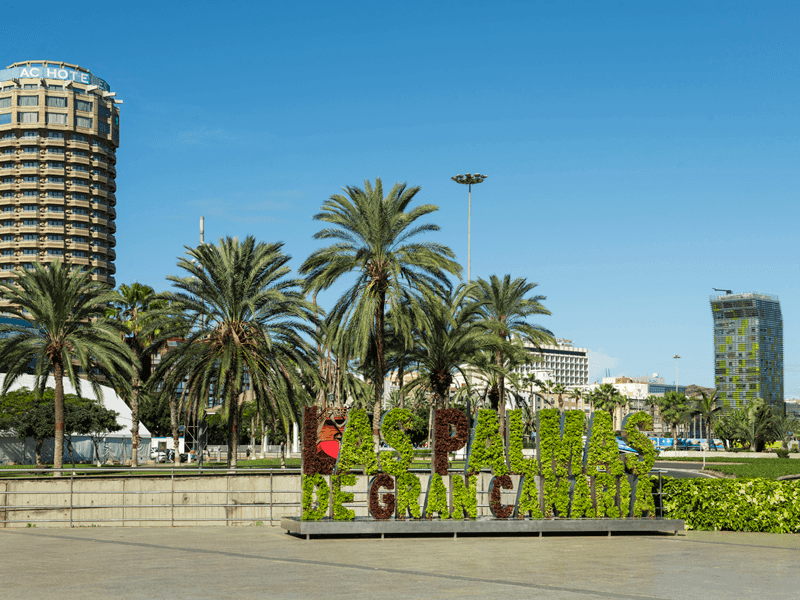
Las Palmas de Gran Canaria
As the capital of the island, Las Palmas de Gran Canaria is a melting pot of culture and tradition. Its streets reflect the rich history of the city, where you can enjoy emblematic monuments and vibrant urban spaces.
Vegueta
Vegueta is the historic heart of Las Palmas. This neighborhood, known for its colonial architecture, is the place where the city was founded in the 15th century. Strolling through its cobblestone streets allows you to discover charming squares, restaurants and craft stores. Among its buildings is the Casa de Colón, famous for its connection to Christopher Columbus and the exploration of America.
Columbus House
The Columbus House is a must-see museum that pays tribute to the figure of Christopher Columbus. This building, which dates back to the 15th century, houses exhibits related to the history of Columbus’ voyages and the colonization of America. The architectural appeal of the house, with its beautiful central courtyard, adds a special charm to the visit.
St. Anne's Cathedral
The Cathedral of Santa Ana is another iconic symbol of Las Palmas and represents the Canarian Gothic style. Built between the 15th and 20th centuries, the cathedral stands out for its imposing façade and impressive interior, where magnificent altars and works of art can be appreciated. The square in which it is located is a popular meeting point for residents and tourists.
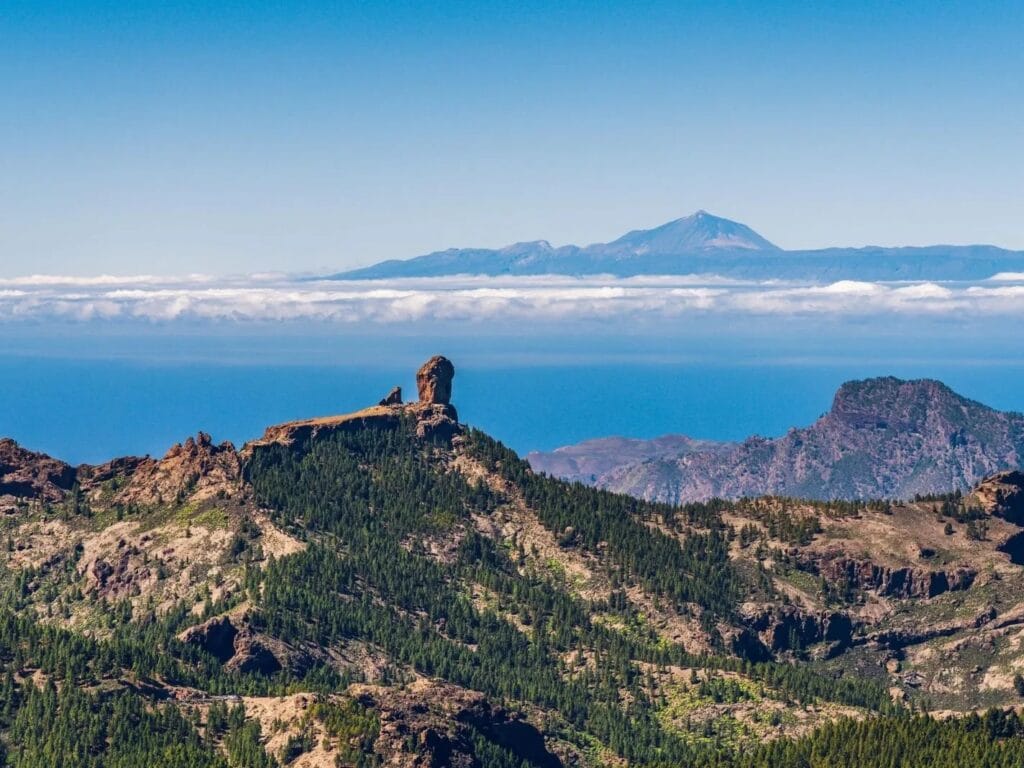
Roque Nublo
Roque Nublo is one of the most emblematic natural monuments of Gran Canaria. This volcanic monolith, declared a site of natural interest, rises 1,813 meters above sea level. Surrounded by spectacular scenery, it has become a favorite destination for hikers and nature lovers. The views from its summit offer breathtaking panoramic views of the island.
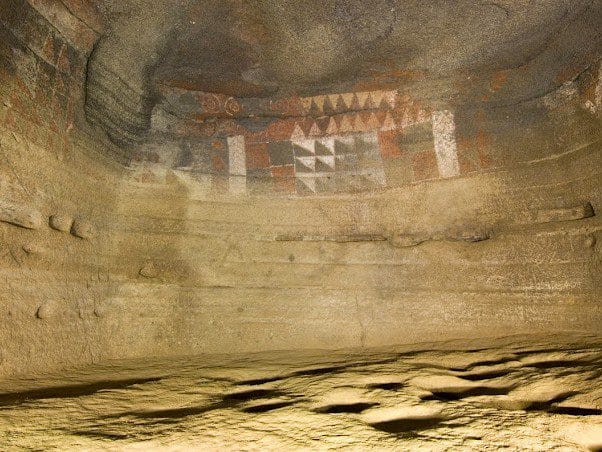
Cueva Pintada Archaeological Park
Located in Gáldar, this archaeological park shows the remains of a Canary aboriginal settlement. The Cueva Pintada (Painted Cave), whose walls are decorated with cave paintings, is the main attraction of the place. This space allows visitors to delve into the history of the Guanches, the ancient inhabitants of the island, and to appreciate their rich cultural heritage.
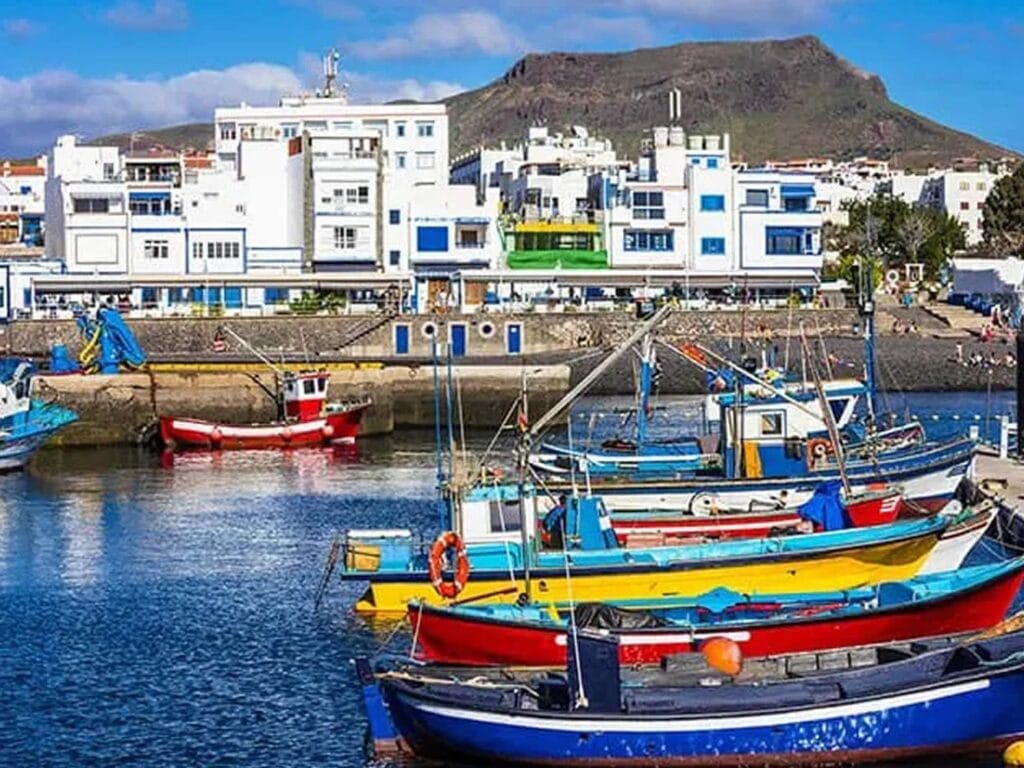
Agaete and El Puerto de Las Nieves
Agaete is a charming village in the north of the island, known for its natural beauty and peaceful atmosphere. Puerto de Las Nieves is famous for its access to crystal clear beaches and picturesque surroundings. This place is ideal for enjoying a walk by the sea or tasting the delicious local gastronomy in its restaurants, which offer fresh fish and other typical products.
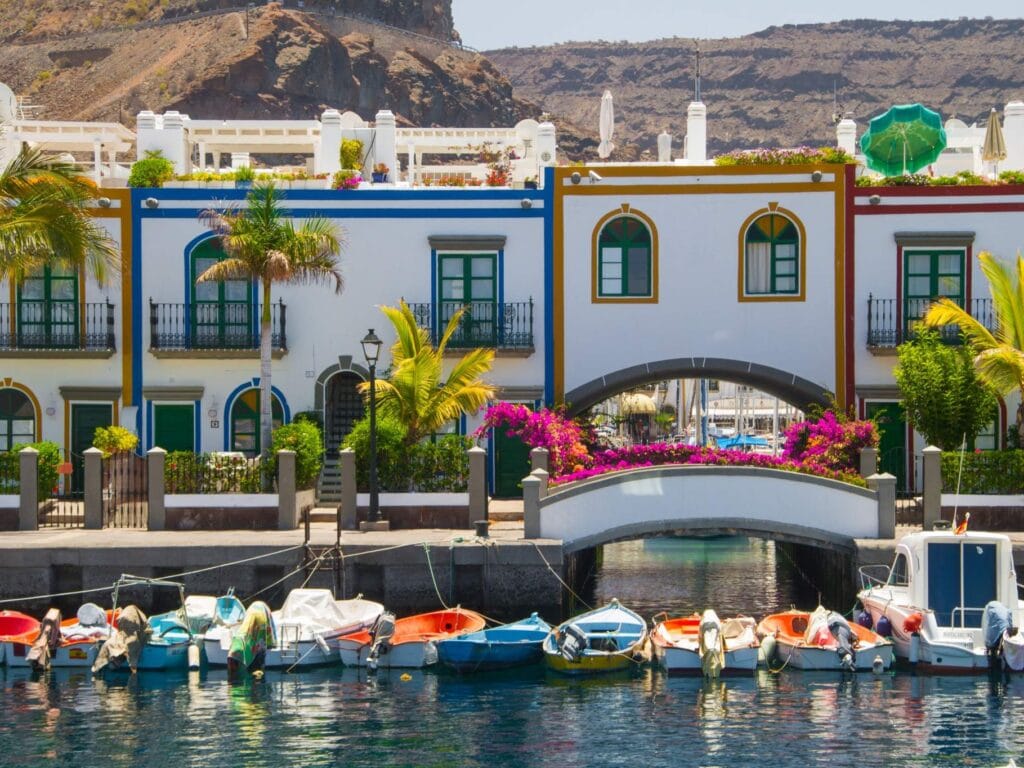
Mogán and its picturesque streets
Mogán is known as the “Venice of Gran Canaria” due to its canals and colorful bridges. This charming seaside town has cobblestone streets full of flowers and houses with balconies that offer a cozy atmosphere. Mogán’s marina is a perfect place to stroll around, shop in its boutiques or enjoy a dinner overlooking the sea.
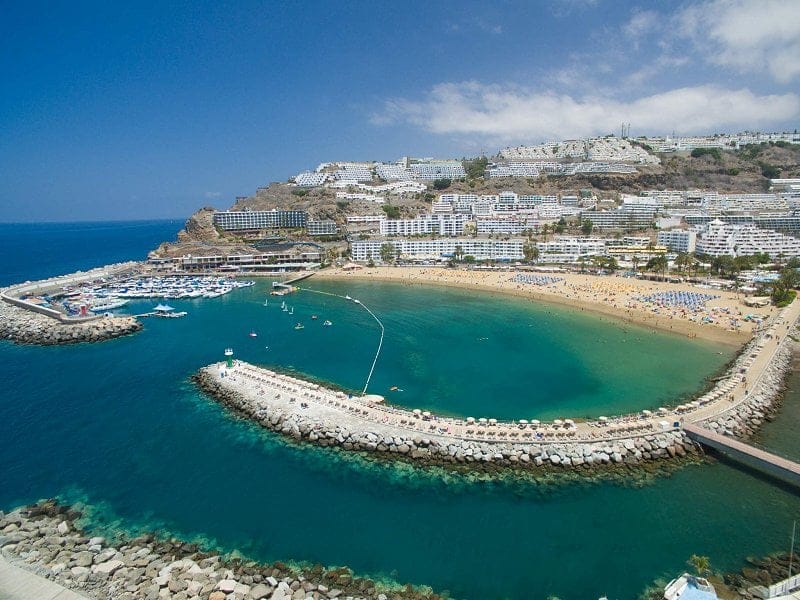
Puerto Rico and its Tourist Environment
Puerto Rico is a popular tourist destination that offers a vibrant atmosphere and diverse activities. With golden sandy beaches and protected coves, it is ideal for those looking to relax in the sun. You can also practice water sports and enjoy the nightlife in its bars and restaurants, which offer entertainment and a wide gastronomic offer.
8. Parks and Natural Spaces in Gran Canaria
Gran Canaria is home to a wide variety of parks and natural spaces that highlight the beauty and diversity of its environment. These places protect unique ecosystems and offer visitors unparalleled experiences in nature.
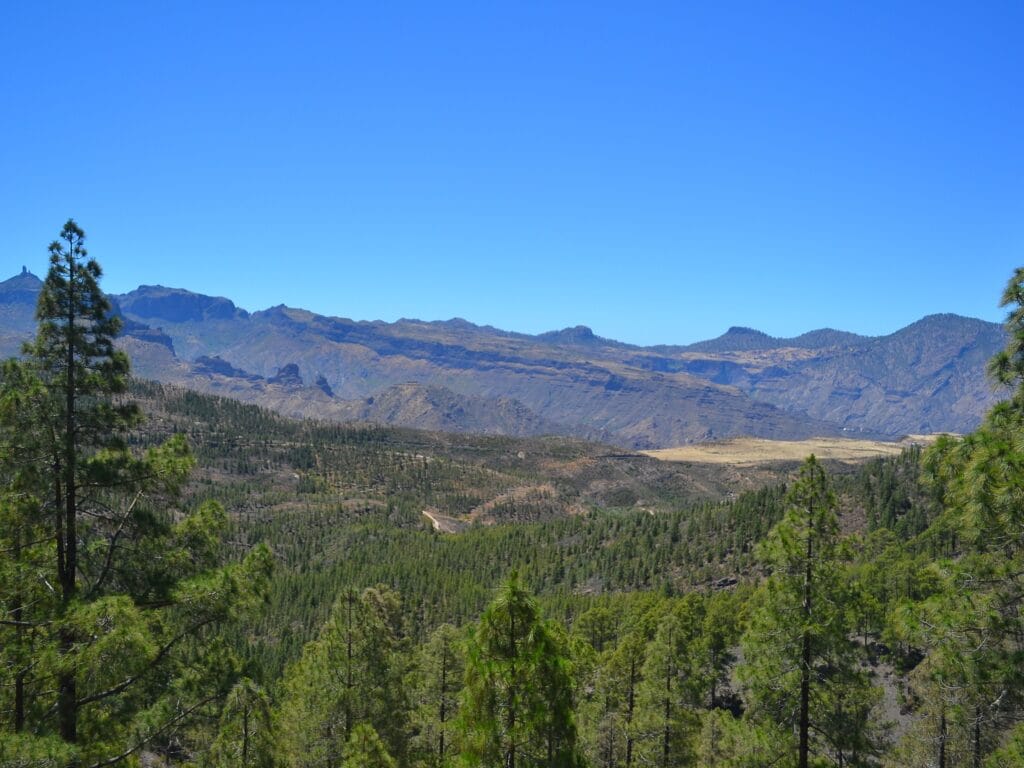
Natural Parks
The island’s natural parks are protected areas that combat human intervention, allowing native flora and fauna to thrive in their natural habitat. These spaces are ideal for hiking and observing the local biodiversity.
Tamadaba Natural Park
Located in the northwest of Gran Canaria, the Natural Park of Tamadaba is a space full of Canary pine trees, cliffs and breathtaking landscapes. With its altitude and varied geomorphology, Tamadaba is a highlight for hiking and climbing enthusiasts.
The park stands out for its great biodiversity. On its grounds you can find species such as the European owl and the blue chaffinch. It is also a perfect recreational area for nature and outdoor lovers.

Natural Monuments
Natural monuments are geological formations that stand out for their uniqueness and beauty, and often have cultural and historical value. These sites are essential to understand the geological history of the island.
Roque Nublo Natural Monument
Roque Nublo is one of the most emblematic symbols of Gran Canaria, a natural volcanic monument that stands over 1,800 meters high. This formation offers spectacular views and serves as a meeting point for hikers of all levels.
Surrounded by a landscape of mountains and valleys, Roque Nublo is not only a place of great geological interest, but also of spiritual interest. It is common to find people performing rituals of connection with nature in this sacred space.
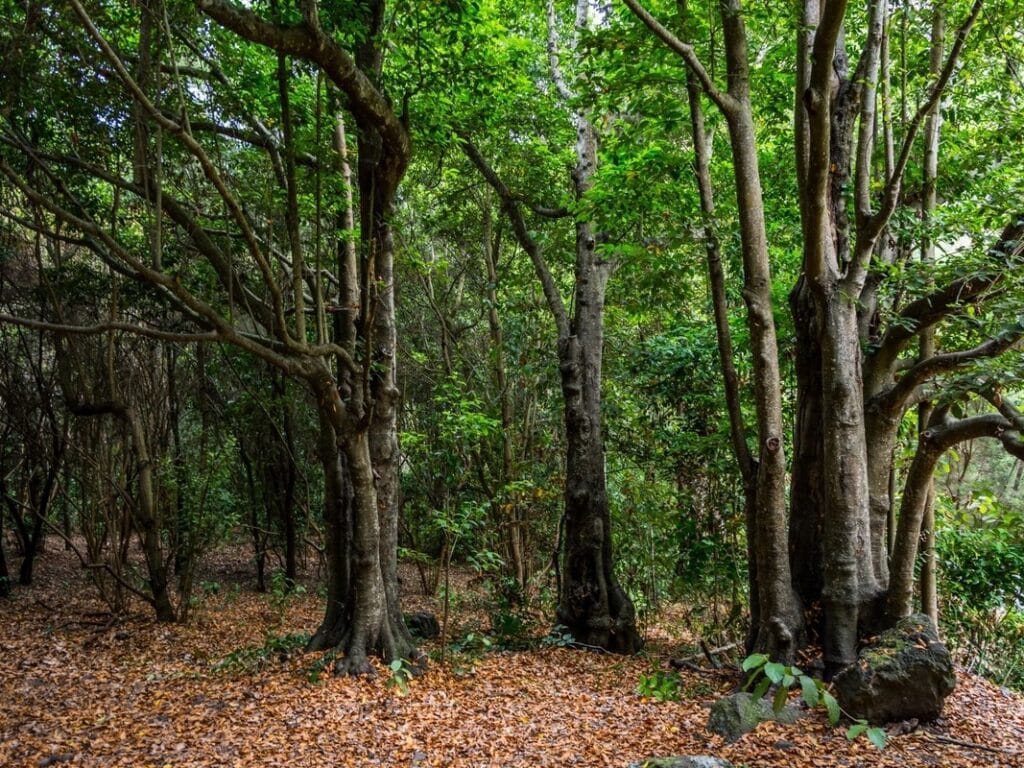
Nature Reserves
Nature reserves are areas designated for the purpose of conserving and protecting ecosystems. In Gran Canaria, these reserves are fundamental for the preservation of biodiversity and the maintenance of natural habitats.
Special Nature Reserve
Special nature reserves in Gran Canaria seek to protect particularly vulnerable species and habitats. These areas are crucial for the survival of endemic plants and animals, and play a vital role in scientific research and environmental education.
Among the characteristics that stand out in these reserves are sustainable practices and the promotion of ecotourism, thus contributing to a balance between conservation and the responsible enjoyment of nature.
9. Economy of Gran Canaria
The economy of Gran Canaria presents a varied and dynamic structure, in which several sectors that contribute to the development and sustainability of the island stand out. Tourism, agriculture and small and medium-sized enterprises are fundamental in this context. The main economic sectors and business opportunities present on the island are detailed below.
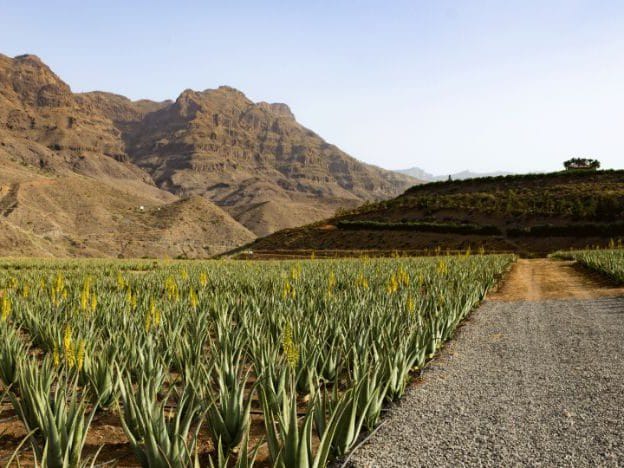
Main Economic Sectors
Tourism
Tourism is the mainstay of Gran Canaria’s economy, being the main source of income. The island attracts millions of visitors annually, thanks to its privileged climate, diverse landscapes and rich cultural offer. Beaches and activities related to aquatic leisure play a prominent role, with resorts offering a wide range of services. Tourists can enjoy resorts, restaurants and outdoor activities, thus strengthening the service sector.
Agriculture and Fisheries
Agriculture in Gran Canaria has a significant history. Crops are adapted to the specific climatic conditions and focus on products such as tropical fruits, vegetables and some cereals. Organic agriculture has been gaining ground in recent years, reflecting a commitment to sustainability and product quality. Fishing is also an important sector, with a tradition that dates back to ancient times. Fishing ports offer fresh fish, which is highly valued in both the local and tourist markets.
SMEs and Local Trade
Small and medium-sized enterprises (SMEs) are the heart of local commerce in Gran Canaria. These companies are essential for job creation and economic dynamization. Proximity commerce favors the local economy, providing products and services adapted to the needs of citizens and tourists. Local markets and fairs allow entrepreneurs to showcase their offer, contributing to the strengthening of the island’s business fabric.

Business Opportunities
Gran Canaria offers diverse business opportunities, driven by its growing economy. Diversification of tourism offerings, with a focus on ecotourism and sustainable tourism, is gaining popularity. Companies that develop initiatives linked to environmental sustainability have high growth potential.
Likewise, the development of new agricultural products, focusing on quality and organic production, can open new doors in the market. Innovation in local gastronomy, using local and fresh products, can attract both tourists and residents interested in experiencing a unique culinary offer.
In the technological field, digitalization and the implementation of innovative solutions in various industries also constitute significant opportunities. Investments in infrastructure and technology will increase the competitiveness of local companies, promoting economic growth and job creation.
"When a Canarian says Tenderete: Canarian party, usually with music and food".
Dichos Canarios
